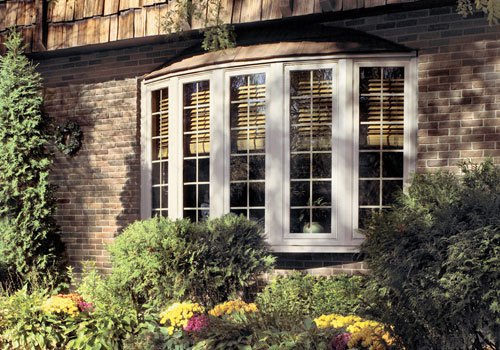MENU



You’ve probably visited some homes with bay windows, or you’ve at least seen them when driving down the street. It’s hard to look past the large, elegant arrangement of windows emerging from the home’s exterior wall. If you are looking for a way to add some unique elegance to your own Dayton home, you might be thinking of adding a bay window. Here are five facts to help guide you.
1. Bay Windows and Bow Windows Are a Little Different
Homeowners often use the term “bay window” to refer to any arrangement of multiple windows, emerging at an angle from the wall. Technically, however, there are two types of windows to consider here. True bay windows only have three side-by-side windows, arranged at distinct angles. Bow windows have four or five windows, and those windows are arranged at more of an arc, rather than at sharp angles. Bay windows tend to look more modern, whereas bow windows look more traditional. Aside from that distinction, they offer the same or similar benefits.
2. Bay Windows Let in More Light Than a Picture Window
Bay windows and picture windows are frequently held up as the best options for bringing more light into a Dayton home. But bay windows actually let in even more light than a picture window of the same size. This is because the varied angles of the window panes in the bay window allows light to come in from multiple directions, so sunshine enters throughout the day. Picture windows tend to capture sunlight only for a few hours while the sun is at a certain point in the sky.
3. Bay Windows Can and Do Open
There’s a common misconception that bay windows do not open to let in any fresh air. This is simply not the case. In some styles of bay windows, the center window is fixed. However, the two windows to the side open. These are often casement windows, meaning that they open on hinges like a door, and you turn a crank to open them. Because the windows that open are placed at different angles, they let in breeze from multiple directions and can be wonderful for ventilation.
4. There Are Half and Full-Height Bay Windows
The first bay windows that come to mind are probably those that stretch from floor to ceiling. These can be a beautiful addition to a living room or master bedroom. But in the kitchen, you might want to use a half-height bay window. These start about halfway up a wall, stretching to the ceiling or just up a few feet. They’re a bit less dramatic, but they don’t eat into your living space so dramatically as a full-height bay window.
5. Bay Windows Can Be Efficient
Even though bay windows consist of a lot of glass, they do not have to be an energy-sink. If you choose energy-efficient glass, low SmartSun™ glass, and also a durable, energy-efficient frame material, like Fibrex®, your bay window will resist heat loss and keep your heating and cooling bills manageable.
Do steer clear of vinyl bay windows. Vinyl windows tend to leak, which is a big deal when it occurs in a large bay window.To learn more about the benefits of bay windows for your Dayton home, contact Renewal by Andersen. We offer free, in-home consultations with knowledgeable technicians.